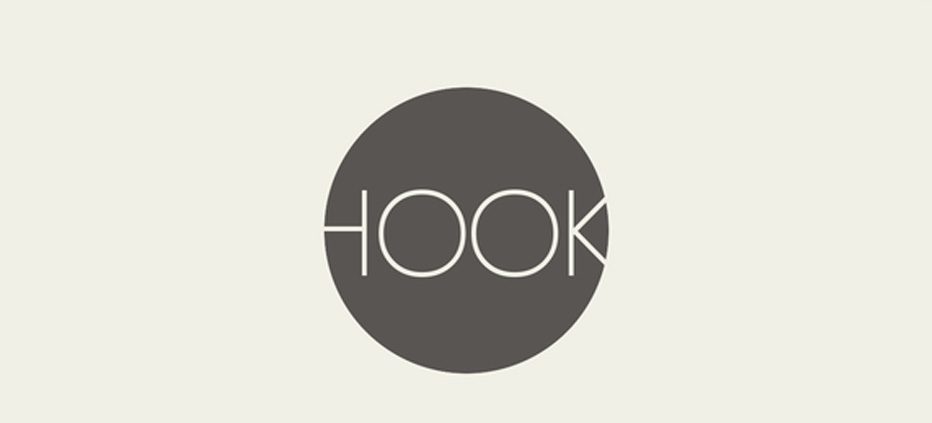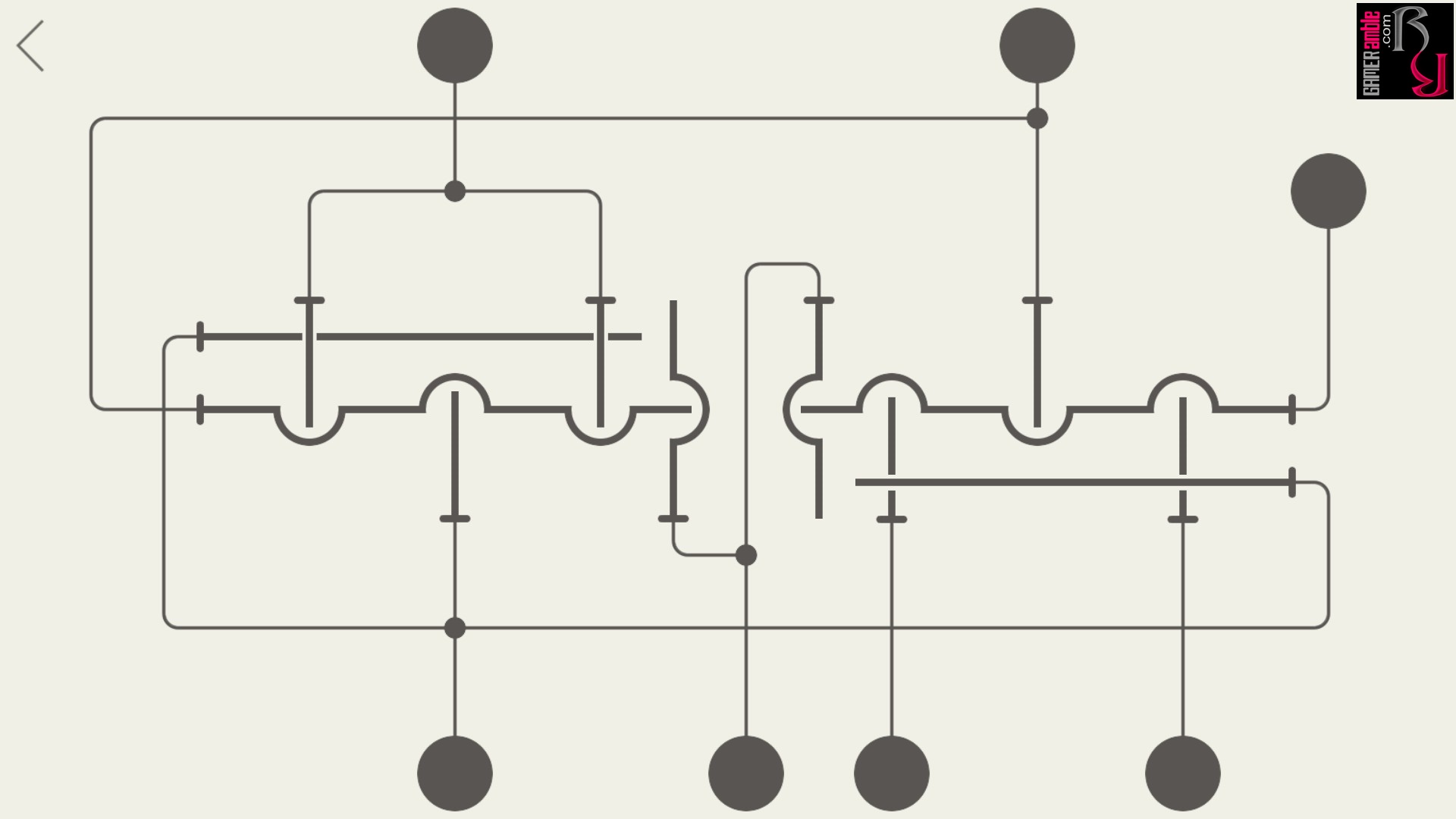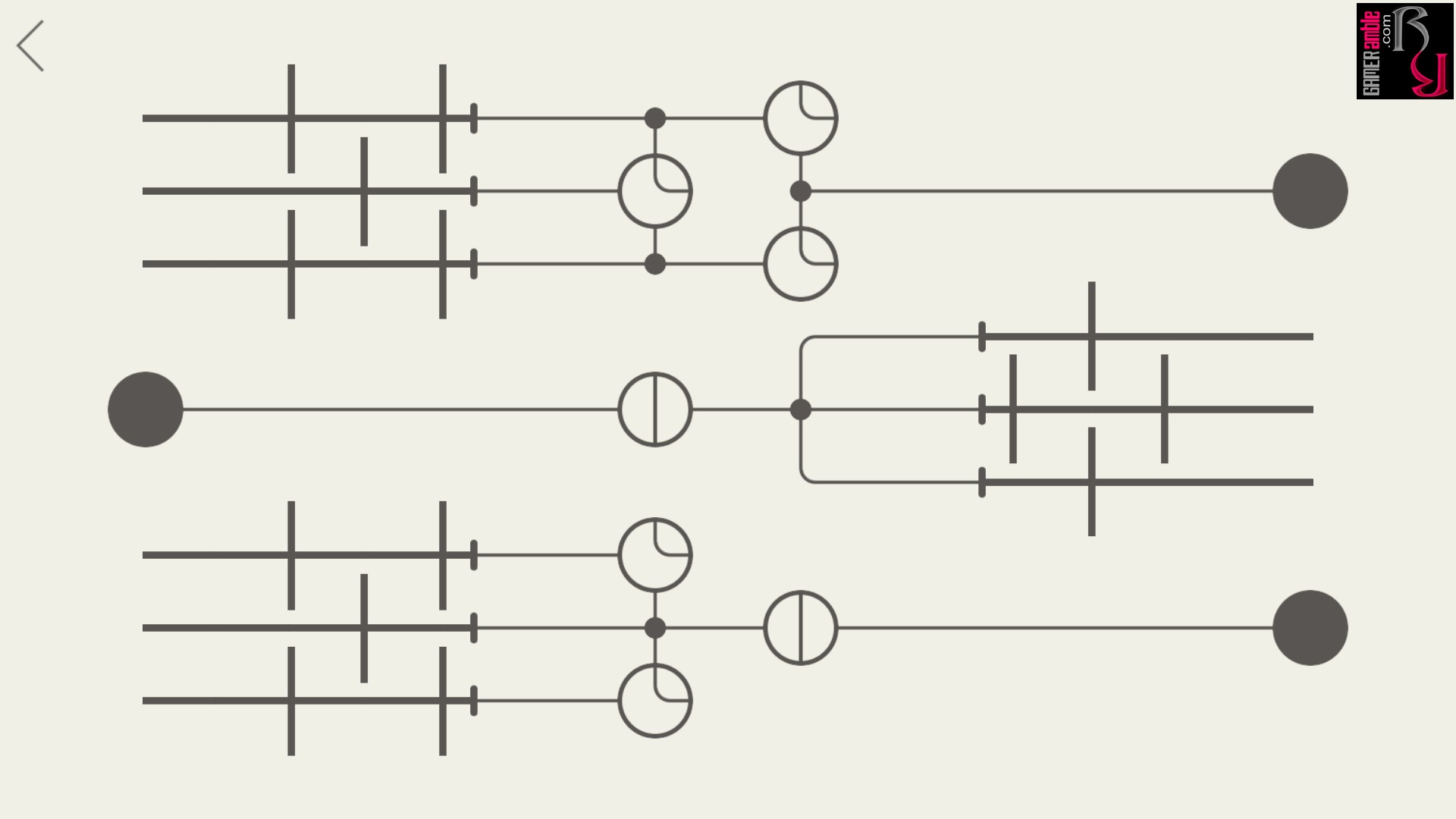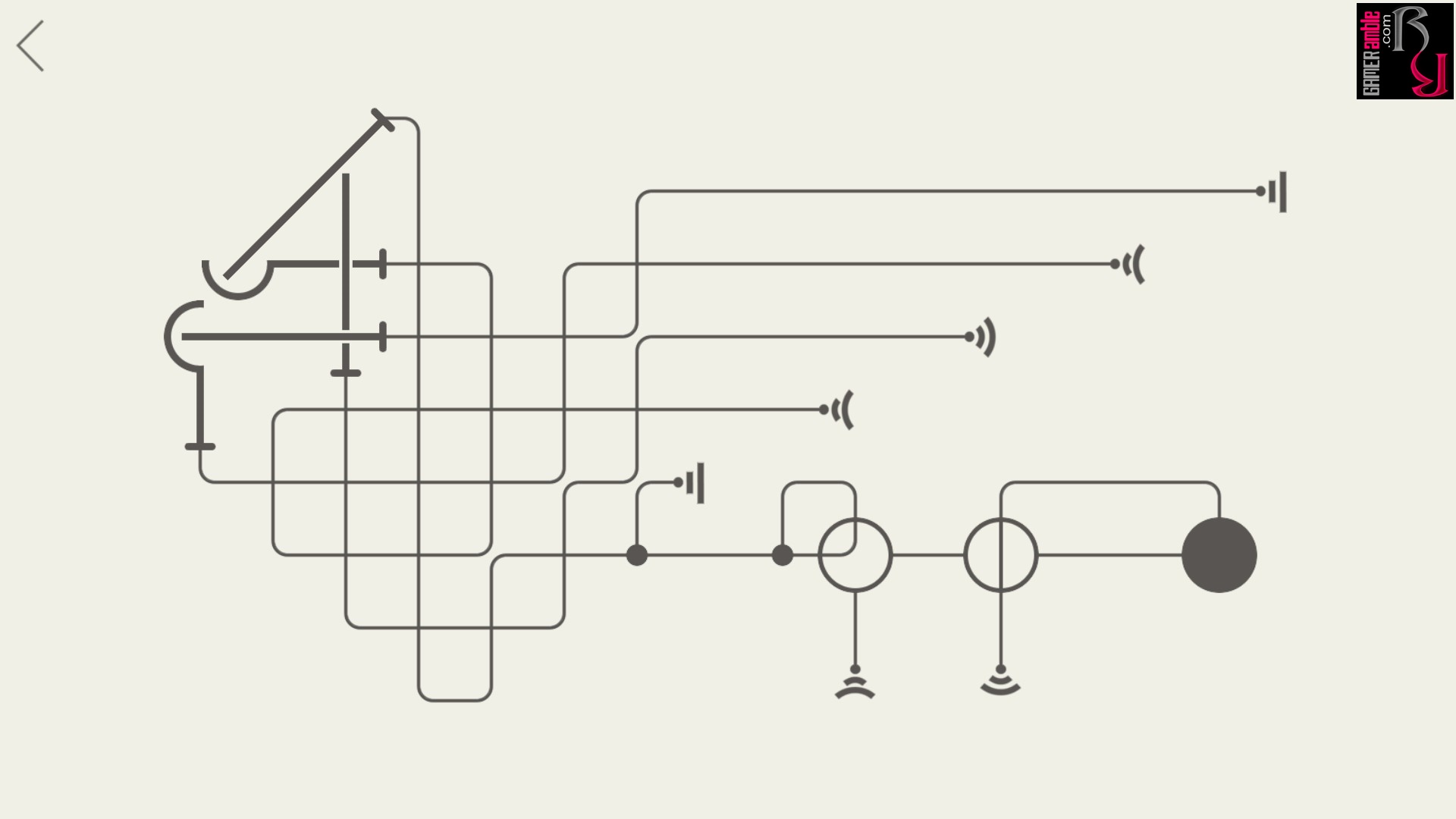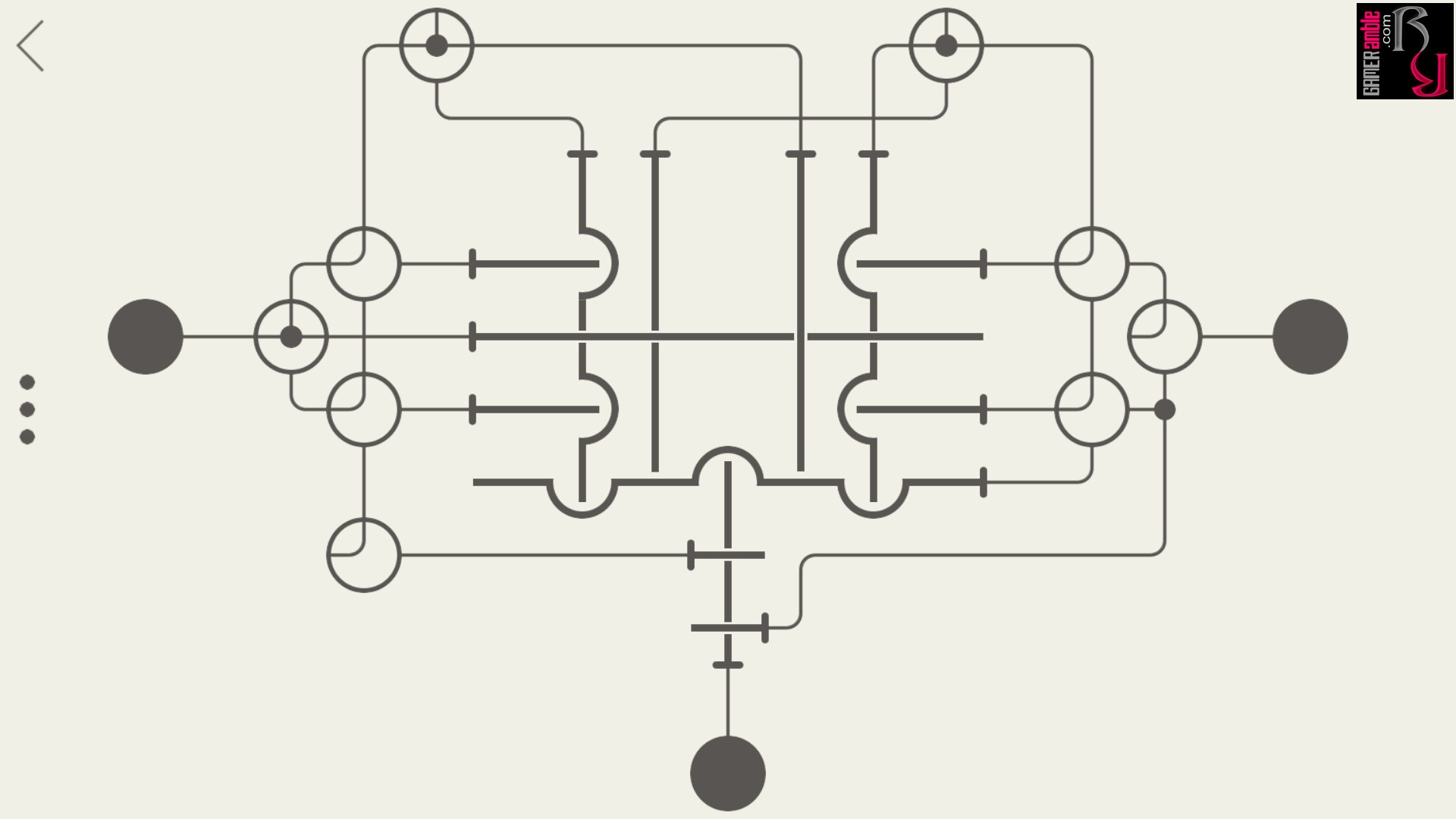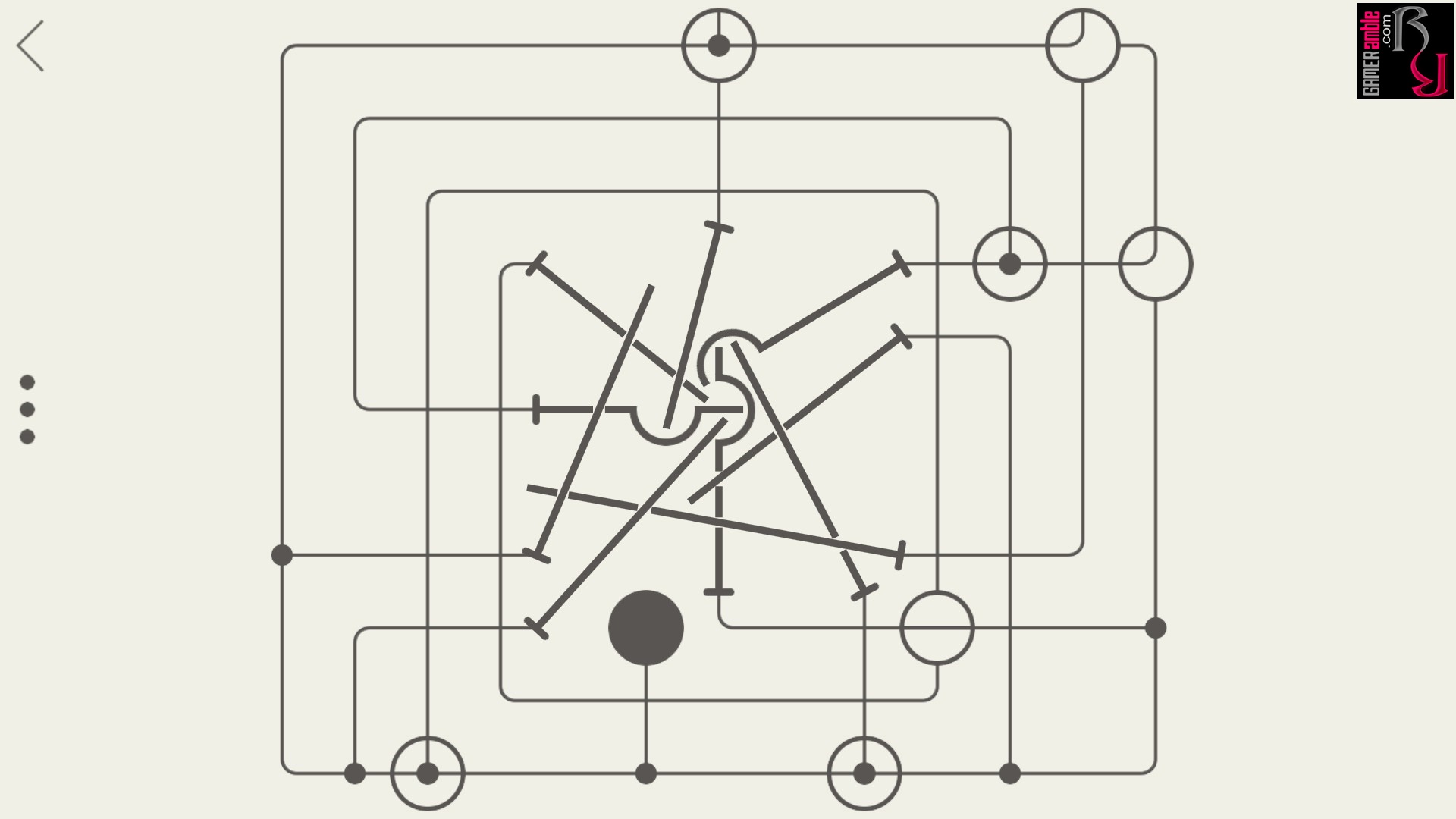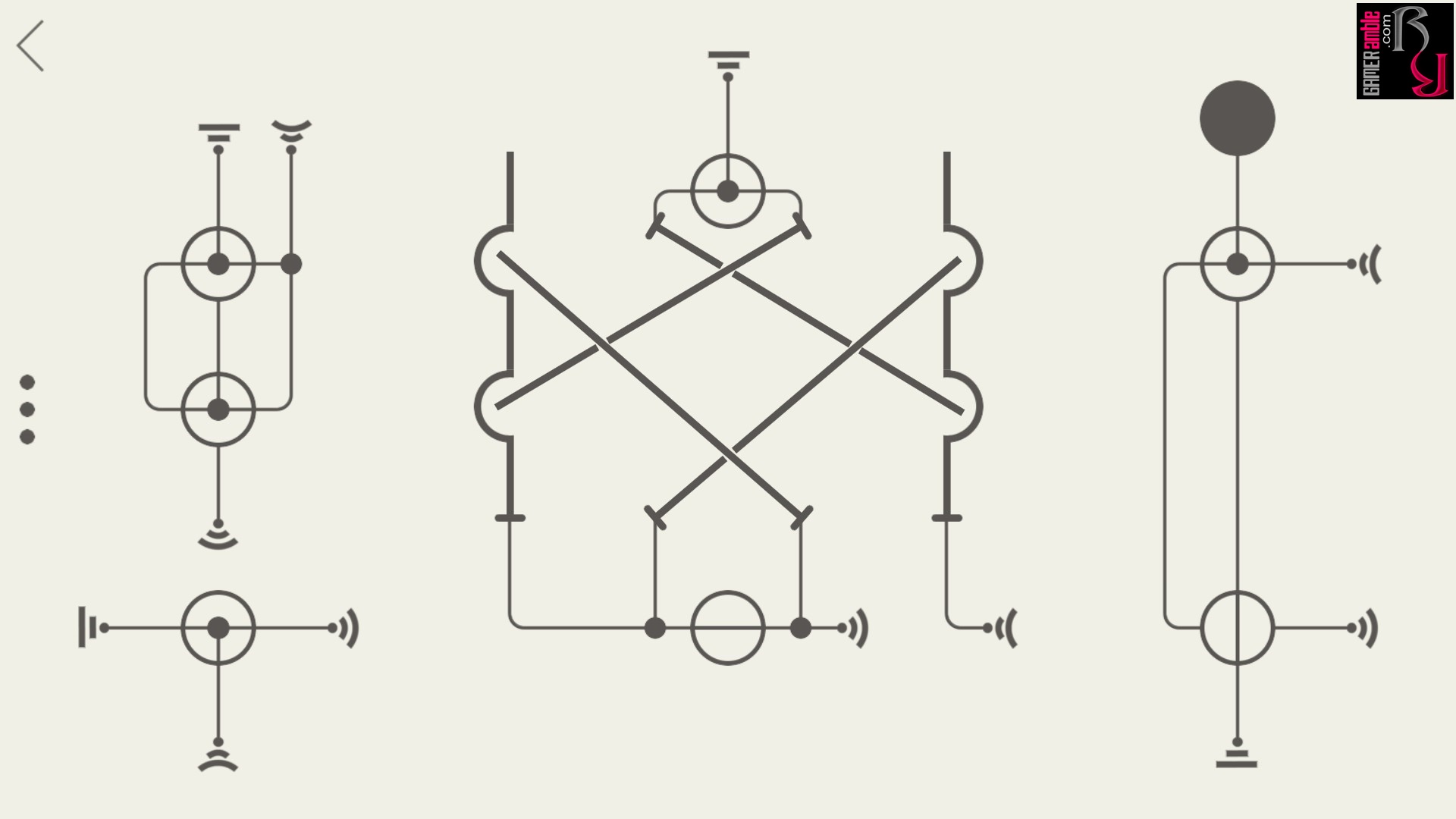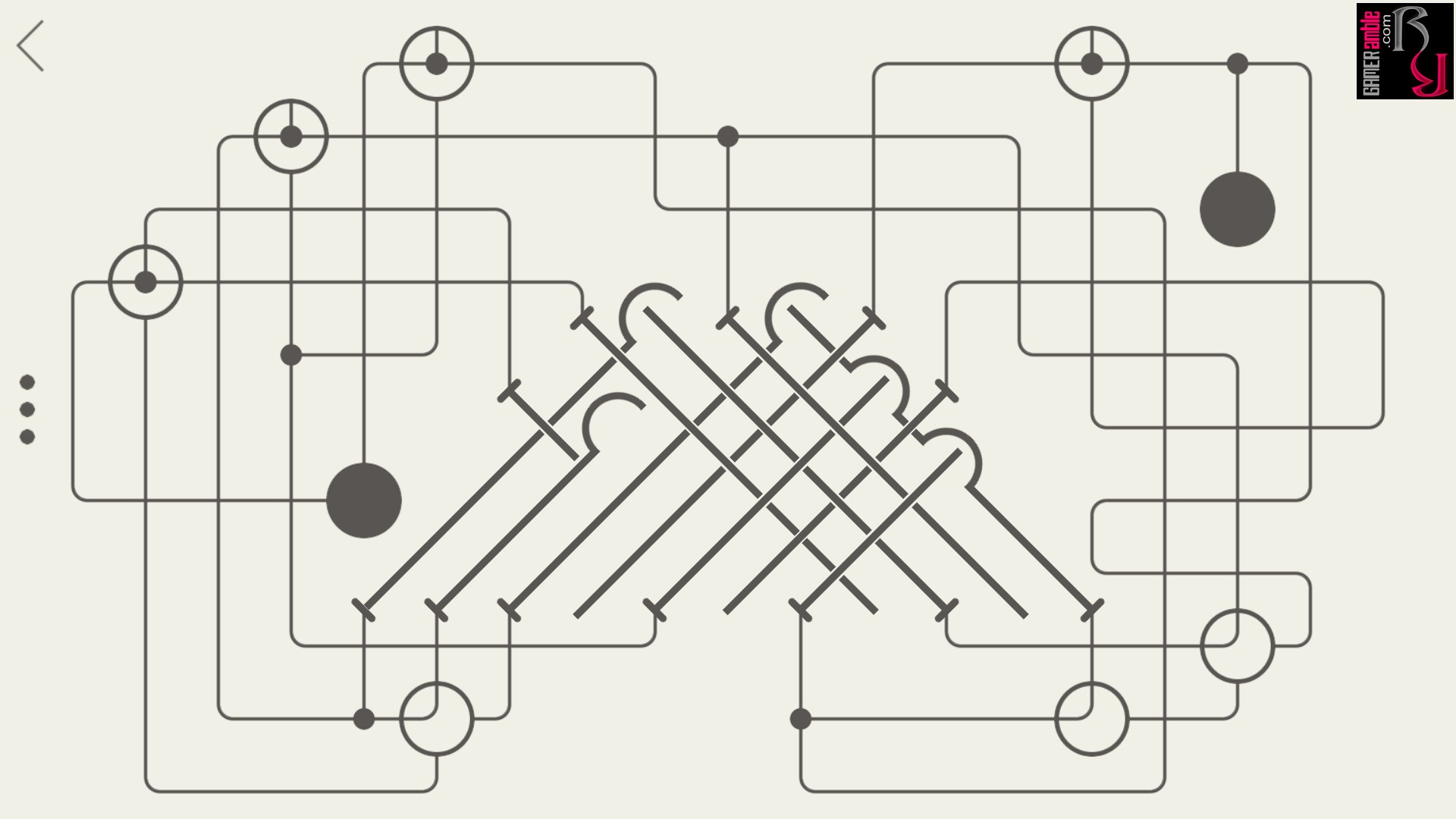Hook
Developer: Maciej Targoni, Wojciech Wasiak | Publisher: Maciej Targoni | Release Date: 2015 | Genre: Casual / Puzzle / Indie | Website: Official Website | Purchase: Steam
Hook is a short, minimal puzzle game about pressing buttons. Apparently, the developer published a prototype on Kongregate, and the feedback was positive enough to warrant a full release. It is easy to see why players got hooked on Hook, though. The gameplay is simple enough that anyone can instantly figure out what is expected from them without the need for tutorials. In fact, Hook eschews traditional menus and throws players straight into the first level when they start the game. Beneath the title, a round button is shown, connecting a thin line to a thick line. Press the button, and the thick line is “reeled” in, which completes the level. By level two, there are two buttons, and the thin lines are now curved. Level three yet again increases the number of buttons and layout of the lines, and by level four, it becomes clear that to prevent some lines from getting hooked on others, it is essential to press the buttons in the correct sequence. This trend continues through the levels as hooks and lines begin to overlap. Eventually, the ability to manipulate the paths of lines is introduced, and buttons connected to multiple lines make an appearance. It never feels overwhelming, though, and with a keen eye and some patience, players can complete the game in a single session.
Looking at screenshots of Hook might make it seem like a complicated game, but usually, it’s just a matter of figuring out in which order to remove the lines without them getting hooked on each other. It almost feels like Jenga at times, as some of the later levels are a jumbled mess of lines and hooks that look practically impossible to disentangle at first glance. However, the developer designed Hook to be more of a game-like experience than a challenge, so frustration rarely rears its ugly head. It wasn’t until we reached levels in the late thirties that we had to really concentrate on avoiding mistakes. From level 40 and up, we had to slow down and double-check before pressing any buttons, but by level 50, it was all over. Nevertheless, for the minuscule asking price, the 50 levels on offer never felt like a rip-off, and although we would have liked to see a few more, we walked away from the game, satisfied with the experience it offered. It doesn’t really have much replay value, and the lack of challenge might deter some players, but it was definitely fun while it lasted.
Visually, Hook makes use of a very minimal style featuring grey lines on a white background. The monochromatic graphics are a good fit for the game’s theme and make it easy to follow the paths of lines even when they overlap everywhere.
We didn’t encounter any issues, but the lack of resolution and audio settings could cause problems for some players. The audio in Hook also matches the monochrome visuals and features calming sounds and tunes. The combination gives the game an almost meditative feel, which is pretty neat. Hook can only be played with a mouse, and interaction is limited to clicking on buttons to activate them or clicking on special sections to alter the path of lines. Since the lines overlap so much, ensuring that only the hooks you want to remove are connected to the button you plan on pressing and nothing else is essential. Because of the intricate structure of later levels, you get three attempts before the level resets, and you have to start from scratch, which is more than fair.
Hook is a straightforward game, so there’s not much more to say other than we enjoyed our time completing all the levels. Each level is sufficiently different from the other to keep the experience engaging, and new elements, such as the wireless switches, make for interesting puzzles. Overall, it’s an excellent game for players who want a cheap and straightforward puzzle experience that feels rewarding to complete but won’t leave them stumped for too long. Puzzle veterans will probably find it too easy, but newcomers to the genre will appreciate the gentle difficulty curve.
System Requirements
- Minimum PC System Requirements
- Minimum Mac OS X System Requirements
- Minimum SteamOS + Linux System Requirements
- OS: Windows XP/Vista/7/8
- Processor: 2 Ghz Dual Core
- Memory: 2 GB RAM
- Graphics: Graphics card supporting DirectX 9.0c
- DirectX: Version 9.0c
- Storage: 100 MB available space
- Sound Card: Any
- OS: Mac OS X 10.7+
- Processor: 2 Ghz Dual Core
- Memory: 2 GB RAM
- Graphics: Graphics card supporting DirectX 9.0c
- Storage: 100 MB available space
- Sound Card: Any
- Processor: 2 Ghz Dual Core
- Memory: 2 GB RAM
- Graphics: Graphics card supporting DirectX 9.0c
- Storage: 100 MB available space
- Sound Card: Any

